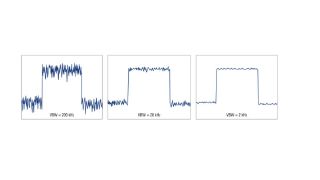R&S®Essentials | Spectrum analyzers fundamentals
Understanding basic spectrum analyzer operation
Author: Paul Denisowski, Test & measurement expert
The following is an introduction to basic spectrum analyzer operation.
Spectrum analyzers are frequency-domain instruments, showing power versus frequency. This is also the most fundamental measurement on a spectrum analyzer: a plot of power versus frequency.
Most spectrum analyzers automate certain power versus frequency type measurements, like AM modulation depth or third order intercept. These measurements could be done manually but automating them increases efficiency and accuracy. Other measurements like occupied bandwidth or adjacent channel leakage ratio, would be difficult or impossible to manually measure.
There are four essential parameters needed to operate a spectrum analyzer. These four parameters are
- Center and span
- Reference level
- Resolution bandwidth
- Video bandwidth
These settings are used when making almost any kind of spectrum measurements.
Center and span
Center and span define the frequency range to be measured by setting the stop and start frequencies.
As an example, to measure power between 840 MHz and 860 MHz. These values could be entered into a spectrum analyzer as start and stop frequencies, but center and span are used more commonly. The names are self-explanatory: center is the frequency in the middle of the display, and span is the width of the display. The range 840 MHz to 860 MHz is the same as a center of 850 MHz and a span of 20 MHz. Most often the center frequency of the signal of interest is known, and by using span it’s easier to zoom in and zoom out by just increasing or decreasing the span.



















